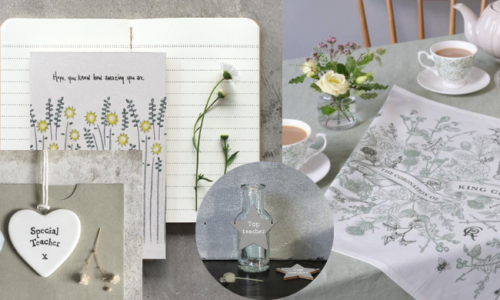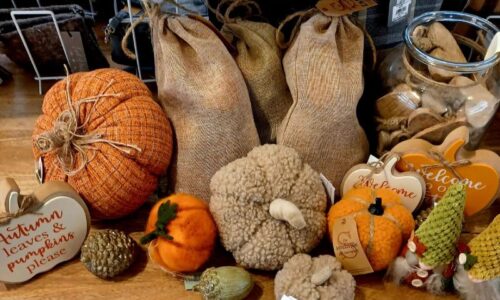How lucky are we to have our very own excellent brewery right here in Clitheroe? Nestled in the heart of the Ribble Valley is Bowland Brewery, a name that’s become synonymous with characterful, flavourful beers — all brewed with passion, precision, and a genuine love for the craft. I spent a delightful and informative couple of hours with Simon Gill, the Head Brewer, to learn what really goes into making our favourite local pints.
Spoiler alert: it’s a lot more scientific (and a lot more energetic!) than you might imagine.
Early Start, Big Responsibility
Simon and his dedicated team are in early, often before most of us have even had our first sip of coffee. Brewing is a job that requires juggling multiple brews simultaneously, each at a different stage of the brewing process. Timing, temperature, and attention to detail are everything.
Here’s how their day and your beer come together:
Mashing: Turning Grain into Sugar
The day begins with mashing. This is where milled grains (usually malted barley) are mixed with hot water in a large vessel to create a porridge-like mixture. The temperature is key — it sits at 67°C to trigger enzymes that convert starch into fermentable sugars.
Over the next hour, the mixture is carefully monitored. Once the conversion is complete, Simon tests the mash to ensure all the starch has successfully transformed into sugar.
From Mash to Wort
What’s left is a liquid called Wort (pronounced wert). Simon describes it as being “a bit like Horlicks” — sweet, warm, and malty. This liquid is drawn into a large vessel called a Copper. This name dates back to when these were actually made of copper (nowadays they’re stainless steel, but tradition sticks!).
Heating, Boiling & Hops
The Wort is then brought to a boil at 100°C. This not only pasteurises the mixture but also helps concentrate the sugars as the liquid evaporates.
At this stage, alpha acids are added for bitterness, and then — after around 45 minutes of boiling — it’s time for hops. This is where the magic happens.
Simon selects hops based on the beer’s desired flavour profile. Some offer floral notes, others citrus, spice, or even tropical fruit aromas. With hundreds of varieties available, the combinations (and creative possibilities) are endless.
The Whirl Pool: Spinning Off the Waste
The next step is the Whirl Pool. The hot Wort is spun rapidly to separate the solid hop residue from the clear liquid. After a short resting period, the clarified Wort is transferred to the fermentation vessel.
Before fermentation can begin, oxygen is introduced to help the yeast multiply. The temperature is brought to 21.5°C — the perfect environment for yeast to get to work.
Fermentation: Where the Sugar Becomes Beer
This is the most exciting part — where beer is born. Yeast and a small amount of enzyme are added. That enzyme ensures all of Bowland Brewery’s beers are gluten free — and here’s the best bit: nothing is removed, and nothing about the flavour is compromised. It’s beer that everyone can enjoy, with all the character intact.
The beer is left to ferment for 5 to 7 days, with Simon checking in regularly to monitor sugar levels and the health of the yeast. Once fermentation is complete, the temperature is lowered to 5°C to send the yeast to sleep. It settles at the bottom, leaving beautifully clear beer above.
Conditioning & Packaging
The beer may then be conditioned for up to a week to further develop its flavour. Once Simon is happy, it’s time to package it into casks, ready to be enjoyed in pubs and homes across the region — and beyond.
More Than Just Brewing

What struck me most during my time at Bowland Brewery was the balance of art and science. Every brew is a product of passion and precision — of tradition and innovation. From careful ingredient selection to the tiniest temperature adjustments, Simon and his team pour their expertise into every pint.
So, next time you enjoy a pint of Hen Harrier, Pheasant Plucker, or any of Bowland’s fantastic beers, know — you’re drinking something truly special, brewed right here in the Ribble Valley by people who really care about what goes in your glass.
Cheers to that!
10 Fun Facts about Bowland Brewery
- Hops come in hundreds of varieties, each with its own unique flavour and aroma. UK-grown hops tend to give earthy, spicy, and subtle berry notes. If Simon wants lighter, more floral tones, he’ll look to hops from warmer climates — much like wine, the soil and climate play a significant role in the final flavour.
- All of Bowland Brewery’s grains are sourced from Norfolk, supporting British agriculture and ensuring consistent quality.
- Absolutely nothing goes to waste — leftover grain and hop material is recycled and used by local farmers as animal feed or fertiliser.
- Bowland operates eight fermentation vessels, each capable of holding a whopping 4,800 litres — that’s more than 8,000 pints of beer per vessel!
- On average, it takes two weeks to produce a batch of Bowland beer from start to finish.
- Simon and his team produce 3 to 4 brews every week, constantly keeping up with demand while crafting new recipes.
- Every new beer is trialled at Holmes Mill, the brewery’s home venue, where drinkers provide real feedback. Only once the team is happy does it go into full production.
- All of Bowland Brewery’s beers are gluten free.
- Some recipes take weeks of tweaking — but occasionally, the magic happens fast. One of Bowland’s most popular beers, Bowland Best, came together in just three days!
- Bowland Hen Harrier, one of the most popular – it is the perfect pint for a summer barbecue.
So next time you’re sipping on a pint of Bowland beer, remember — it’s not just a drink, it’s a product of craftsmanship, care, and good old Northern know-how. Cheers to Simon and the team for keeping the Ribble Valley beer scene truly top-notch.
Aud’s Kitchen
Sticky Chicken & Sticky Ribs with Bowland Black beer
Pair your pint with something truly mouthwatering from Aud’s Kitchen! My sticky chicken and ribs recipe uses Bowland beer in the marinade to give a rich, malty flavour with just the right amount of sweetness and depth.
For the best results, I recommend marinating your meat for at least 5–6 hours, or overnight if there’s no acid (lemon) — but take care, if your marinade contains lemon juice, vinegar, yoghurt, or buttermilk, don’t leave chicken for longer than overnight as it can break down the surface texture.
To make a marinade for meat on a barbecue, you need a robust, flavoursome beer with lots of body, which is why Bowland Black Creamy Stout is perfect.
I have had fun experimenting with a couple of Bowland beers and have found that Bowland Black not only makes an excellent marinade but also a glaze for brushing on the meat while cooking on the barbecue.
I have two recipes, one with pork ribs and one with chicken thighs, both easy and perfect for your next barbecue.
Grill, BBQ, or roast until the meat is beautifully caramelised and cooked through, basting with the leftover marinade as it cooks for extra stickiness.
Serve with: Coleslaw, fresh corn on the cob, and — of course — a pint of Bowland beer!
Next time you’re enjoying a beer brewed just down the road, why not try it with something delicious from your own kitchen? Cheers to local flavour — in your glass and on your plate.





